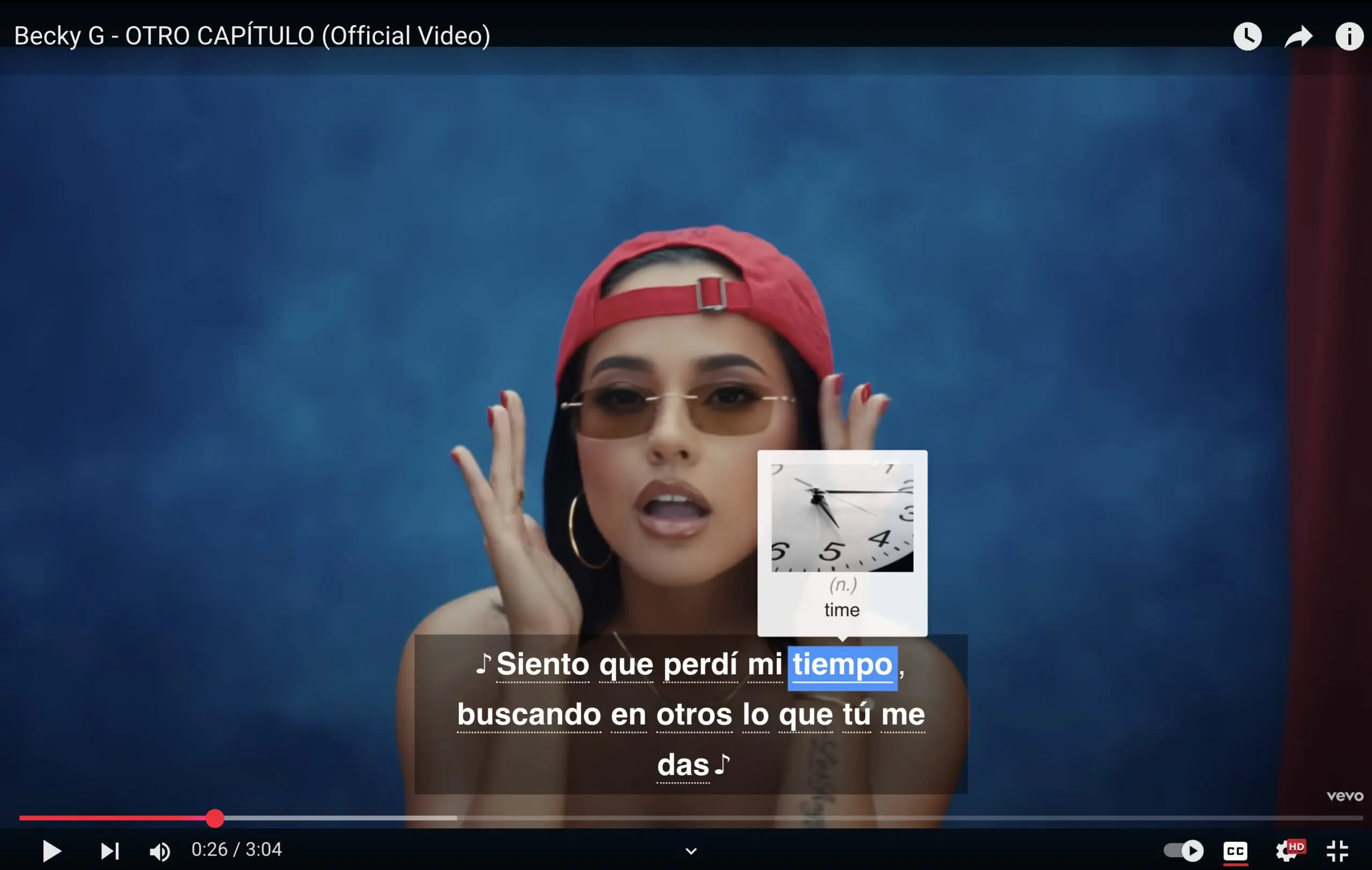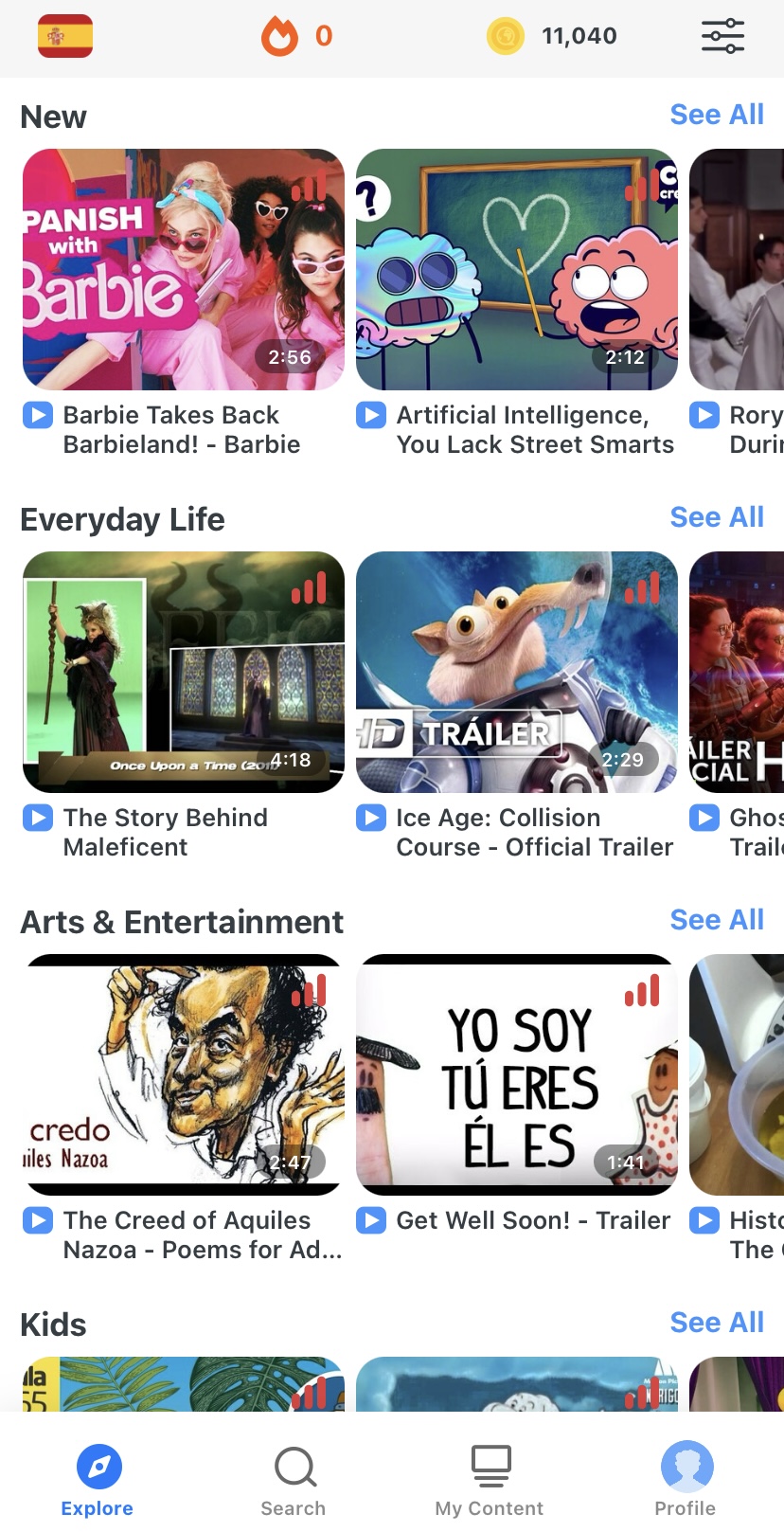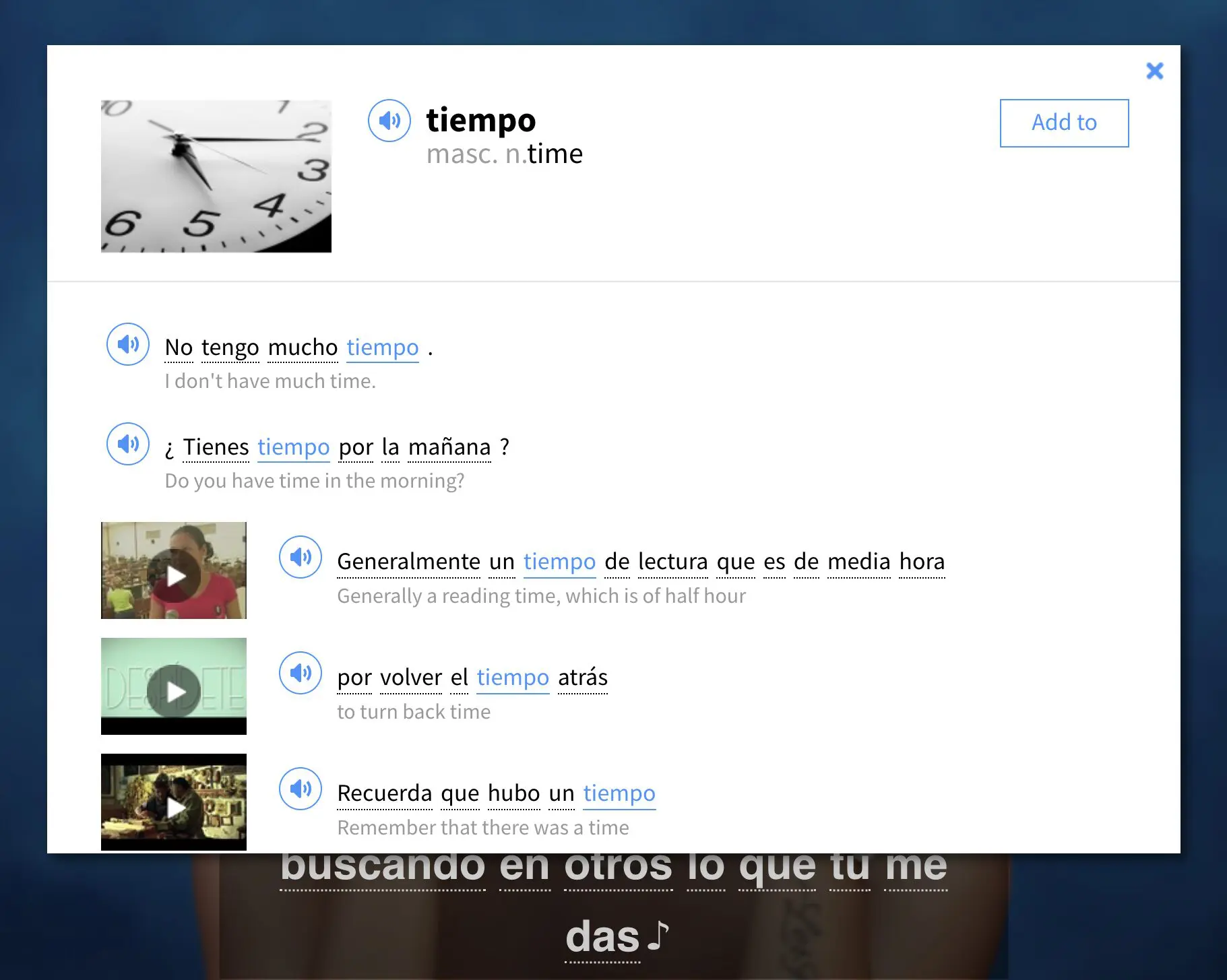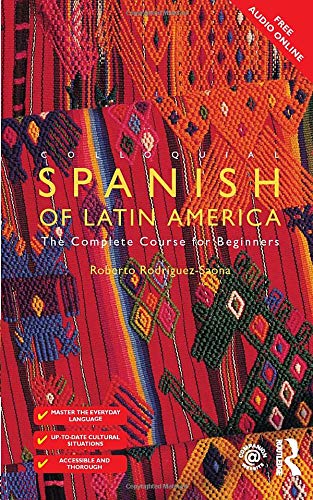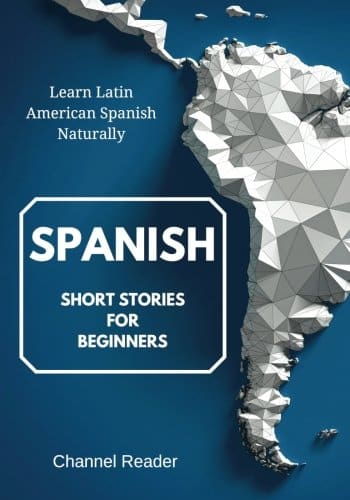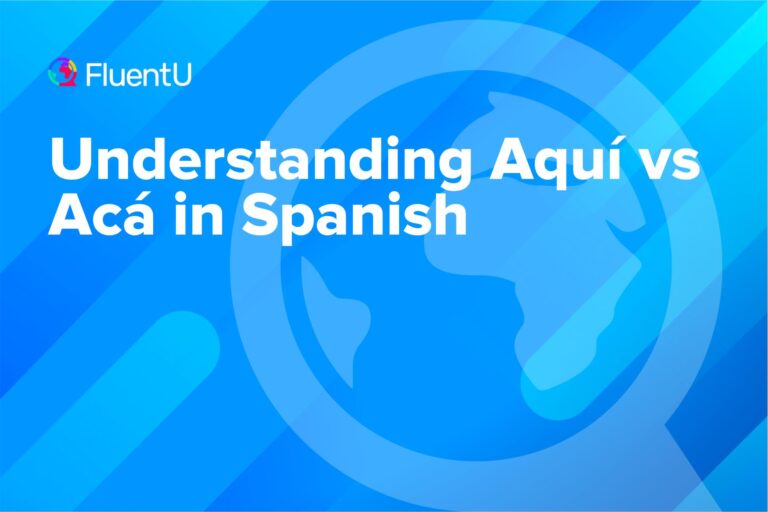Contents
- 6 Practical Tips to Learn Latin American Spanish
- Unique Resources to Learn Latin American Spanish
- Radio Ambulante
- FluentU
- Live Lingua Podcast
- Lengalia Podcast on Latin America
- Academia Latinoamericana de Español
- Complete Latin American Spanish Course on Udemy
- University of Texas Spanish Proficiency Exercises
- Gritty Spanish
- “Colloquial Spanish of Latin America”
- “Spanish Short Stories for Beginners”
- RadioLingua
- Dialectos
- Veinte Mundos
- Powerful Strategies to Learn Latin American Spanish with Audio
13 Unique Resources to Learn Latin American Spanish

Spanish is one of the most regionally varied languages out there. Even if you know you don’t want to go the European route, you still should focus on one particular dialect.
This blog has previously provided some excellent coverage of Chilean, Mexican, Argentinean, Ecuadorian and Cuban Spanish. And there’s a good overview of the main contrasts between European and Latin American Spanish.
This post is intended to serve as a guide for those who want to learn Latin American Spanish, but haven’t settled on any particular region.
I’ll cover a few regional particularities and then strategies for learning the local dialects. I’ll also share my top picks of resources to learn Latin American Spanish and some effective tips for learning with audio.
Download: This blog post is available as a convenient and portable PDF that you can take anywhere. Click here to get a copy. (Download)
6 Practical Tips to Learn Latin American Spanish
1. Use voseo in southern South America
The tú (informal you) that you might have learned in Spanish class is replaced with vos in Argentina, Uruguay and in a few other countries. It’s considered perfectly correct in Argentina, and using it there is a great way to show that you value the local version of the language.
The conjugations of the verbs are a bit different from tú. They also change slightly depending on the country that you’re in.
A really quick and easy way to use it is by saying Bien, ¿y vos? (Good. And you?) when someone asks you ¿Qué tal? (How’s it going?)
2. Use the preterite (instead of the perfect)
Did you breathe a sigh of relief when you discovered that Latin American Spanish doesn’t have vosotros, meaning you could forgo learning an entire set of conjugations?
Well, it seems that every time a language gives you some simple freebie, it also wallops you with something else that’s extremely complex.
In the case of Latin American Spanish, you’re going to have to use the preterite a lot more than you would in European Spanish. Europeans tend to rely more heavily on the perfect tense, and the relatively easy constructions like he ido, has ido, ha ido (I went, you went, he/she went — lit. I have gone, you have gone, he/she has gone).
These are formed with the conjugated form of haber (to have) and the participle form of the verb. The participle endings are -ado for -ar verbs and -ido for -er and -ir verbs.
In Latin America, you use the preterite form for all simple actions completed in the past, and the preterite form has lots of irregular verbs.
For example, the verb ir shown above becomes fui, fuiste, fue, fuimos, fueron (I went, you went, he/she went, we went, they went). If you went to the market this morning and returned to your lover with a basket of goodies, you would say the following:
- In Spain: He ido al mercado esta mañana. (lit. I’ve gone to the market this morning.)
- In Latin America: Fui al mercado esta mañana. (I went to the market this morning.)
There’s no way around this. You really have to memorize all of those irregular ones if you want to speak even passable Latin American Spanish.
For further studying, preterite conjugations are readily available at WordReference.com.
Some of the best practices for learning this form include flashcards and writing/telling people stories about past events in your life in order to practice what you’ve learned. It also helps to watch videos from Latin America that make use of the past tense.
TV shows are useful for seeing the preterite form in action. In fact, this video from the FluentU Spanish YouTube channel has a good number of shows that will demonstrate the differences in past tense between European and Latin American Spanish.
3. Pay attention to Spanish in the USA
Spanish is the second most-spoken language in the United States, thanks first to the country’s long history of conquests in Spanish-speaking lands and later to migration that continues to this day.
Hispanics are one of the fastest-growing demographics in the United States, making the language economically and culturally invaluable for anyone living there.
Spanish in the USA and Spanish from other parts of the Americas share many similarities in terms of pronunciation and grammar.
However, one area in which USA Spanish is more unique is the incorporation of English grammar and words, i.e., Spanglish. It isn’t uncommon to meet people in the United States who speak both languages “poorly,” but another way of putting it is that they’re mixing the two to create something new.
One example of how this occurs is the use of calques, or overly literal translations like llamar para atrás (to call back). The more Spanish way to say that would be volver a llamar
Another calque heard in the USA is sabe cómo hablar inglés (he knows how to speak English) instead of just the more “correct” sabe hablar inglés (he can speak English). Yes, the ubiquitous “like” is becoming contagious. There’s more interesting coverage of calques here.
Then there are the words that get borrowed (and sometimes Hispanified) to enrich American Spanish vocabulary. Some of my favorites are the verbs that add an –ear to become Spanish-ish, like these ones below.
- Telefonear instead of llamar (to call)
- Parquear instead of estacionar (to park)
- Lunchear instead of almorzar (to have lunch)
4. Listen for pronunciation
Pronunciation varies widely across the Americas, making this a dangerous subject to generalize. But one thing we can say is that the accents have a lot in common with Spanish in Southern Spain (from which many people emigrated to the Americas back in the day).
Here are some of the most common features of pronunciation in Latin America:
- Dropped Ss. The S at the end of words sounds like an aspirated H, although sometimes it disappears entirely. Instead of hearing “¿Cómo estás?” you’ll hear ” ¿Cómo está?” (How are you (informal)?). Due to the missing S, it can be difficult to know whether speakers are using the formal address, which would also be “¿Cómo está?”. Some speakers in Latin America will add back in the missing tú for clarity by saying “¿Cómo está tú?” but it would still be written as ¿Cómo estás tú?.
- Latin American Spanish speakers pronounce their Zs and Cs (before I and E) like Ss. Spaniards tend to stick their tongues into them, in a lisp that sounds like “tttthhhhhhh.”
- The J sound in Central America and the Caribbean is just like our English H. You won’t hear the sort of hacking sound that Spaniards make that sounds like the “ch” in the Scottish “loch.”
5. Pick your destination to study Spanish in Latin America
Some of the more popular destinations for Spanish study in Latin America are Argentina, Chile and Costa Rica. These are relatively stable and better-off places with good universities and a history of welcoming foreign students.
The disadvantage of these places is that you won’t be alone. If your goal is to “lose yourself” in Latin American culture, you can certainly do it anywhere, but it will take more effort if there are lots of other foreign students around.
I went to Santiago, Chile on a study abroad program in university because my study abroad counselor had nothing much to say when I asked where she thought I should go, and handed me a brochure seemingly at random.
“You should go somewhere based on what culture you’re interested in,” she said, but I had no idea what any of the cultures were like.
Making your own decision based on your personal interests and course of study is definitely great advice, but here’s what I wish someone had said to me then, a bit more simply:
Go to Buenos Aires if you like big, fascinating cultural cities.
Go to Costa Rica if you like fabulous, relaxed people and pretty rainforests.
Go to Peru, Ecuador or especially Bolivia if you want more of an adventure, amazing local music and real immersion away from so many other foreign students.
6. Pick up local dialects
In a misguided effort to be accommodating, people you meet in Latin America will sometimes simplify or even “Castilianize” their speech when speaking to a foreigner. You should encourage them to speak their own version of the language; it’ll both help them value it and help you learn.
You can reinforce this by asking them about new local words and phrases, noting them down and employing them in your own speech.
Eventually, you’ll get to a point where locals don’t even think of you as a foreigner and will speak naturally—and that’s when your Latin American Spanish will really start to take off.
Unique Resources to Learn Latin American Spanish
Now that you have all the tips for tackling all the different variants, I want to share some of my favorite tools and references that will round out your Latin American Spanish.
Some of these might even help you narrow down the regional dialect to focus on.
Radio Ambulante
Best for: Intermediate and advanced learners
Radio Ambulante has always been a great resource for learning about Latin American cultures. And each episode is narrated like a story, which keeps listeners really engaged.
All the podcasts are accessible through the NPR website, NPR One app, Apple Podcasts, Google Podcasts and Spotify, although I do prefer listening to them on the main Radio Ambulante portal since I can read the transcripts as I’m listening to each episode. That way, I can also get a little reading practice in and note down any new words if I come across any.
The website is fantastic, and it clearly labels the country of origin for each story.
I do have to point out that these podcasts are around half an hour long and presented by Peruvian author Daniel Alarcón.
Generally, Radio Ambulante is suited for anyone ready to learn intermediate-level Latin American Spanish, but it’s especially useful for those that want to listen for the Peruvian accent and slang.
If you’re interested in learning more through these Latin American stories, you can download their app, JiveWorld.
FluentU
Best for: Beginners to advanced learners
With FluentU’s Chrome extension, you can use our interactive learning tools with any subtitled content on YouTube or Netflix. You can even import your favorite YouTube videos directly into your FluentU account for customized learning!
FluentU also gives you access to a huge library of real-world Spanish videos—movie trailers, news clips, music videos, and more—all organized by topic and level.
No more stopping to look up words or struggling to keep up with fast speech. While you watch, FluentU’s interactive captions let you tap on any word for an instant definition, audio, image, and example sentences.
Worried you’ll forget all those new words from the videos? We’ve got you! Our fun, adaptive quizzes reinforce what you’ve learned and even give you extra practice with words you find difficult, making sure they stick for the long run.
Ready to make every video a language lesson? Start using FluentU on your computer or tablet, or download the FluentU app from the App Store or Google Play. Click here to take advantage of our current sale!
Live Lingua Podcast
Best for: Beginners
This is a good starting point for those with little to no experience in Spanish.
While this podcast covers the fundamentals that can be used in all Spanish-speaking countries, the focus is on Latin America in terms of the language, cultural notes and activities that involve visualizing yourself in places like Venezuela and Chile.
This beginner-level podcast is divided into 10 units, each composed of at least 10 episodes that are only a couple of minutes long. It’s basically bite-sized learning.
Each unit contains audio lessons, visualization exercises and reviews to reinforce what had been covered in the unit, so even though you’re listening to recordings, the instructor still asks you questions to help you think and respond in Spanish.
I recommend listening to these podcast lessons through the website so you can read along with the transcripts, but you can also find these episodes on Apple Podcasts, Spotify and Stitcher if you prefer to learn on the go.
Lengalia Podcast on Latin America

If you want to know the similarities and differences between each Latin American Spanish, this podcast is what you should listen to.
From Argentina to Venezuela, there’s a podcast for every nation in Latin America that speaks Spanish.
Every episode is a conversation between European Spanish speaker Diana and a native speaker from each featured nation, which is helpful for distinguishing differences between accents.
These 22-minute-long podcast conversations are actually part of a course that provides vocabulary lists, language exercises, translations and transcripts for the dialogues. But you can access all the podcasts for free through the website.
I can’t speak on the rest of the course content since the audios alone already provide a ton of information, from climate, food, history, landscape and other interesting cultural tidbits that would attract Spanish-learning travelers.
If you’re an intermediate learner, I suggest you listen to these dialogues, pausing them any time you want to take any notes.
Academia Latinoamericana de Español
Best for: Beginners
Academia Latinoamericana de Español offers Spanish programs and volunteering opportunities in Cusco (Peru), Quito (Ecuador) and Sucre (Bolivia).
Additionally, the website has a good selection of free resources that’s really helpful for complete beginners.
These resources are divided into four sections.
The first is the Spanish lessons section which consists of nine lessons that will teach you the language basics.
Next up is Spanish Pills, a section dedicated to distinguishing between similar-sounding words and pronunciations between Latin American and European Spanish.
The last two sections are Spanish Vocabulary and Survival Guides, both of which cater to Latin America.
If you like the idea of studying online but require some guidance, you always have the option to sign up for the online course, where you’ll be paired with a teacher that can work with you for up to 16 weeks.
Complete Latin American Spanish Course on Udemy
Best for: Beginners
Need something more comprehensive as a novice? Then this course on Udemy might be what you’re looking for. You’ll even get a certificate of completion if you’re motivated by that kind of thing or want a skill to add to your resumé.
What I like about this course is that the lectures start you off in an environment you’re already familiar with—your own home.
From rooms and household items to daily routines and chores, the grammar and vocabulary lessons are all centered on what you do and see every day.
The Complete Latin American Spanish Course has 26 lectures that are just about six hours in total length. This includes 15 video lessons and four extra, and if you want to emulate that classroom experience, you can also project these lessons onto your smart TV.
In addition, there are 44 downloadable resources so you take those with you everywhere you go.
University of Texas Spanish Proficiency Exercises
Best for: Intermediate and advanced learners
The previous two resources are targeted at complete novices, but the problem with those is that there isn’t any progression into more advanced levels. If you want to take it a step further, these online exercises courtesy of the University of Texas at Austin will give you what you need.
Although the provided tasks range from Beginning to Superior Level, the video examples and podcast lessons are completely in Spanish, presented by native speakers from all over Latin America that speak at a normal speed.
These clips are just around a minute or so, but this kind of immersion might be a little intimidating for learners who are just starting out.
Take note that these exercises were made way back in 2006. The video quality is less than stellar, but the content is timeless.
I admit that this course is a little dry and the website design could be more engaging, but I do enjoy their short and sweet grammar explanations that usually have comparisons to English structures.
There’s a lot of ground to cover when it comes to Spanish grammar, so I appreciate the conciseness of the grammar and vocab sections.
Gritty Spanish

This language learning resource is far from anything you’ve encountered before. Or that’s what it was like at least for me.
The one thing you’ll quickly learn about Latin Americans is that they’re very passionate. Thus, there’s an intensity when they express their emotions. If you want to learn how to argue, swear and deal with daily struggles like a true Latin American, then Gritty Spanish has got you covered.
What’s fantastic about this program is how truly realistic the situations are, from the conversational flow to the background noises that really immerse you into each scenario.
The content really helps you speak and relate to Latin American communities on an entirely new and spunky level, which you definitely need if you want to communicate with locals as authentically as possible.
There are four audio packs and an additional pack which is just a censored version of the original. You also get a free e-Book when you sign up. Read our full review of Gritty Spanish here.
“Colloquial Spanish of Latin America”
Best for: Beginners
As much as I enjoy having access to online resources, I still like having some sort of textbook on hand to work on my reading and writing skills.
I also like mixing up my learning materials so I can listen to and see complex grammar structures in different forms.
It’s true that spoken Spanish can vary greatly from written Spanish, but “Colloquial Spanish of Latin America” features real conversations, clear explanations, supportive exercises, culture points and a focus on Latin American pronunciation to get you to learn the language the way it’s actually spoken daily.
This book has been used both in classrooms and for independent study, so that says a lot about the quality of the content.
“Colloquial Spanish of Latin America” is also accompanied by audio files from native speakers. The files are available for download to help you refine that Latin American accent and pronunciation.
“Spanish Short Stories for Beginners”
Best for: Beginners
If courses and textbooks seem a little too boring for you, consider learning Spanish through short stories that are distinctly Latin American in terms of cultural subtleties, idiomatic expressions and colloquial language.
The majority of the text is in the present tense, so there’s nothing too crazy, grammar-wise. The stories are a light read, each divided into three chapters that contain vocabulary lists, comprehension questions and answer keys.
Because these stories are inherently short and are accompanied by an English translation, this book is an excellent escape from that generic language textbook that beginners are so often recommended.
For parallel texts like this, I like to read them before bedtime and then read them again the next day before completing the exercises.
If this book works out for you, you can also order the second volume of stories.
RadioLingua
Best for: Intermediate and advanced learners

RadioLingua is a fairly new website that exposes world-language learners to the basics in pronunciation, common phrases and conversation through short 3:37-minute audio bits. Lucky for you, they have recently added RadioLingua One Minute Spanish for Latin America, with a premium course and membership in the works that will cost only $12 USD.
Currently the free version provides listeners with 10 lessons that offers a nice, friendly and approachable method to LAS audio. These 10 lessons are ideal for beginners, as phrases are repeated several times, with English translations incorporated into the audio bits.
To get an idea how the One Minute LAS system works, listen to the 1-minute introductory video and then head over to Lesson 1. For your convenience, all lessons can be downloaded to your iTunes or as an mp3 file on your computer.
Dialectos
Best for: Beginners to advanced learners
Dialectos (dialects) is the holy grail of LAS sounds and phonetics. The precision of its search engine offers a language gold mine where you can explore all angles of LAS pronunciation and accents. The search engine provides you with four different search fields: country, linguistic feature, conversational topic and indigenous language—how cool is that!
Let’s say that you’re amused by the use of voseo in LAS, or maybe you just want to listen to some LAS from Puerto Rico. No worries, because Dialectos has you covered—even going as far as offering you audio in the Quechua language, an indigenous Andean language, and also the second official language in Peru.
Although the indigenous language section is limited, it’s nonetheless an important linguistic aspect of LA to explore as an engaged learner. Quechua in Peru, Aymara in Bolivia and Guarani in Paraguay are definitely worth exploring because of the re-emergence of indigenous communities in popular society and the formation of these languages alongside Spanish in state affairs.
Veinte Mundos
Best for: Beginners to intermediate learners
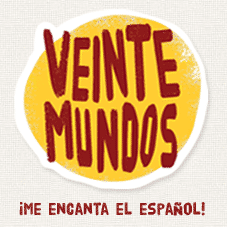
This is a very practical site which offers LAS audio neatly organized in four sections: Art/Culture, Travel/Geography, Society/Economy and Short Stories.
The audio recordings range from 6-10 minutes, and all of them come with a colorful written transcript. The topics are complex enough to offer a comfortable level for advanced speakers, but are just accessible enough to create a real challenge for both beginners and intermediates—thanks to the length and written transcripts.
Start out with this report exploring the Chilean-Peruvian debate around El Pisco.
Powerful Strategies to Learn Latin American Spanish with Audio
The Triple Listen
Choose an audio bit adjusted to your level (beginners, go for 30 seconds – 1 minute; intermediate to advanced learners, use 2-3 minutes of audio). Try to keep your audio bits to three minutes maximum, and remember you can use segments of larger audio. The trick here is to listen to your audio bit or sound bite in three separate time blocks throughout the day, preferably once in the morning, afternoon and evening.
There are three tricks to make sure this technique works. First, don’t stop the audio bit, but rather, listen all the way through. Second, listen in a silent area and don’t do anything else while you’re listening (no iPhones, checking email, etc.)—active listening is key here. Third, write down two new words on your third and final listen (in the evening), but no more than two.
This activity is incredibly effective and only takes 3-5 minutes of listening time plus two minutes for finding your two vocab words, so you’re looking at seven minutes a day maximum. If you repeat this Monday-Friday, you’ll have listened to five audio bits, taken down 10 new vocabulary words and exposed yourself to over 25 minutes of audio in LAS.
Play with Speed
Download Audacity to slow and speed up audio. This is a particularly helpful strategy when you are a beginner and need to do things a bit more despacio (slowly) at first. Playing around with speed can give you insight into particular intonations and accent rhythms that are common throughout certain LAS accents.
For example, if you were to plug in a few audio bits with an LAS from Argentina, you’ll notice the accentuation falls at the end of words and sentences due to the influence of Italian on the language, whereas an LAS from Mexico is a bit less rhythmic. You might not be able to play with your food, but you sure can play with language!
Phonetic Repetition Exercise
This was my Spanish teacher’s favorite activity, which although difficult at times, it brings polished results—especially on your overall pronunciation. Pick an audio bit and perform two separate listens. The first listen is simply listening all the way through with no stops or interruptions. The second listen is where you work.
On the second listen, stop the audio after every sentence, then repeat out loud what the speaker has said. Make sure to record yourself on the second listen. To record you can use your smartphone, or simply an online voice recorder in order to avoid distractions.
It’s recommended you do a third listen, this time trying to correct your intonation, accent and pronunciation in order to match it to the speaker. Don’t hesitate to stop in trouble spots to re-listen and re-record several times. In fact, this will help you in the long run, and you’ll also have more recordings to look back on to view progress.
Continuity
This strategy is more of a piece of advice rather than a particular method, because consistency really is the key with language advancement and development, especially with your audio exercises. Don’t take any sudden gaps or long breaks away; keep your ears active.
This is why activities like the Triple Listen and Phonetic Repetition work so well, because they are activities you can perform daily and anywhere, despite your schedule and/or location.
How do you make this practice a regular occurrence? Well, keep your LAS relevant—as in listen to LAS music, put up your vocabulary words around your room and watch LAS movies. With these habits incorporated into your life, it’ll be a cinch to learn with audio.
With these four methods in your back pocket, let’s get to some incredible audio resources that will either expose, redefine or refine your linguistic abilities.
With all these tips and resources, I hope you’ve gained some insight into navigating the Latin American Spanish world. Good luck on your language studies!, or ¡Buena suerte en tus estudios de idioma!
Download: This blog post is available as a convenient and portable PDF that you can take anywhere. Click here to get a copy. (Download)


